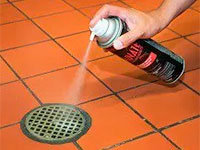
- LAST UPDATED: December 12, 2023
Every homeowner dreads the day when they will switch on their kitchen light only to see a mouse scampering for safety. For many years, mice have lived among people and have become well adapted to sharing our homes. They can hide and live in many different areas of the home, from inside kitchen appliances to the attic and behind walls.
Once mice establish hiding spots, they can set up a nest, begin to breed, and easily come out when no one can see them (preferably at night) in search of food. To prevent a mouse infestation from getting worse, it is important to know where mice hide both inside and outside the home.
Contents
Common hiding places
Once mice gain entry into your home, they become experts at staying out of sight. They typically seek shelter in hidden corners and other tough to reach places where people are less likely to discover them. Mice can hide both indoors (within your home) and in outdoor areas of your property.
The most common hiding places for mice are basements, attics, kitchens, garages, and inside walls. Within these areas, they can squeeze into tight spaces and cracks where they’re hard to find.
Where do mice live?
In addition to common hiding places for mice, there are several areas where mice tend to live inside and outside the home. They hide their nests well out of site, and in most cases, you can only see the damage they cause or the droppings that they leave behind.
However, there are certain common places where mice tend to set up a nest, sleep, and eventually breed.
Some of these areas include:
- Inside walls.
Walls are a common area for mice to hide. If you have any cracks in the drywalls, they can fit inside holes as small as the size of a dime. Mice easily form nests inside the drywall because it is difficult to detect them in such areas. Over time, the mice will breed and give birth to offspring within the nest. Are you looking to find ways of How to get rid of mice in walls? Follow this link.
- In attics. The secluded nature of attics makes them a perfect home and breeding ground for mice. They can easily escape into dark attic areas where they are hard to find. They will also find ways to access food in the kitchen, living room, or other areas where they can feed. This article tells you about the best way to kill mice in attic.
- Inside storage boxes. If you have piles of boxes where you store items, mice can turn these areas into their new home. Especially during the winter, they tend to seek shelter in warm areas of the home where they can find food and breed. Storage boxes allow them to hide deep inside your items where they are hard to find.
- Behind appliances. Kitchen appliances can serve as both nests and hiding places. Appliances such as ovens and dishwashers are especially convenient for mice to hide in the home. This is because they can easily access food from the scraps that are left behind after cooking or washing dishes. Most ovens also have wide baking spaces and multiple vents that are designed for cooling the appliance. Mice tend to enter these spaces to access food and to hide from being detected.
Where do they hide during the day?
Most people wonder where mice hide during the daytime. This is because you will almost never see mice running around your home during normal daylight hours; even if you have an infestation. Indeed, mice know how to hide and remain inactive during the daytime when they are likely to be seen by people. They will typically remain in their hiding spots and come out at night when they stand a small chance of being seen.
Mice will often remain hiding where they live and where they have established nests. As previously mentioned, walls, attics, inside storage boxes, and behind/inside appliances are common areas where mice will remain hidden during the day.
As long as they can easily access food when you’re not around, they will remain in their hiding spots where they can rest, sleep and breed. Most mice will prefer to hide between 30-50 feet from where they can access food.
Where do mice hide in a house: Indoor hiding places
Mice will typically establish indoor hiding places where they can rush to avoid detection. When you turn on the lights and see a mouse scampering for safety, it is probably running towards a hiding place. Hiding places for mice may be the same as where they live, especially in the home. To find out if it is safe to sleep, when you have a mouse in your room click here.
Mice will tend to establish their nests in more hidden areas such as inside walls or in attics and basements. On the other hand, indoor hiding places will be where they can quickly access food and avoid being detected.
- Inside kitchen cabinets.
Kitchen cabinets are a classic example of where mice can hide but will typically not establish a nest. They can use small openings in your cabinets to access stored food or consume items that they got from other areas of the kitchen. When they detect someone approaching, they will hide deep within the cabinet to avoid being seen.
- Inside furniture.
Upholstered furniture also serves as a convenient hiding place for mice in the home. They can easily tear holes and enter the furniture to hide whenever necessary. If you notice that your furniture has been chewed up and ripped open, this could be a sign of an infestation by mice.
- Within water heater closets.
These serve as a warm and comfortable hiding place for mice where they can also set up nests over time. If your water heater is near a food source, mice can use it as a base where they scamper to safety when someone approaches. Larger water heater closets that have a lot of clutter will also eventually turn into the perfect mouse breeding ground.
Do they live in walls?
Mice typically live within walls if they can find a way to get in. They will take advantage of small cracks and holes that are in or adjacent to the walls in order to access these areas. There are several signs you can look out for to determine if you have mice in your walls.
For example, you may hear constant tapping and scampering inside your walls, especially at night. You may also notice droppings near the corners of the wall or spots where the drywall has been chewed by the mice.
Mice are able to access your walls through tiny open spaces, or though the basement and attic. Once they access the walls, they are difficult to catch and remove from the home. They will typically establish a nest within the walls using wood, cardboard, and other soft materials that they can chew off and arrange as desired.
Mice in walls can also potentially chew electrical wires and pose a fire hazard to the home. If they remain undetected for long periods, they will not only attract more mice via their droppings, they will also begin to breed and give birth to offspring. Many homeowners ask the question “Can mice climb?” Click here to find out.
Outdoor hiding spots
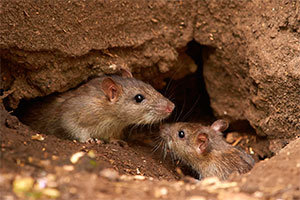
Mice can also create hiding spots in barns, old cars, boats, and other structures outside the home. The more clutter you tend to have outside, the more likely mice will hide inside these areas.
If the weather is warm, mice are more likely to have hiding spots outside. However, most mice will find ways to move indoors when the weather is cold so they can seek shelter and also breed. If you’re wondering how to keep mice out of your house, refer to this article.
How to lure a mouse out of hiding?
In order to address an infestation by mice, one of the most effective strategies to use is to lure them out of hiding.
This will allow you to capture the mice and remove them from your home:
- Know where the mice are actually hiding/living.
In order to lure a mouse from its nest, you must first know where it’s hiding. Watch out for signs such as mouse droppings (small black drops), scratching and tapping behind walls, or signs where the mouse has chewed through furniture, cardboard boxes, and walls.Once you have a good idea where the mice are, you can begin to lure them out of their hiding spots.
- Use the right type of bait.
It is important to use the right type of bait that will lure mice from where they’re hiding. Foods such as peanut butter have a strong scent that will attract mice from both their hiding spots as well as their nests. You can attach peanut butter to a mouse trap to lure the mice out so they can get caught as they attempt to feed. Mice traps should be placed near the hiding spots of the mice to be effective.
- Use repellent sprays/foul odors to compel them to leave their hiding places.
Mouse repellent sprays are also useful for luring mice out of their hiding spots. Once you know where the mice are hiding, you can spray scents such as ammonia, onion, peppermint or garlic that mice find unattractive. These scents will compel them away from their hiding spots and into other areas where they can be caught.
Why do mice come out at night?
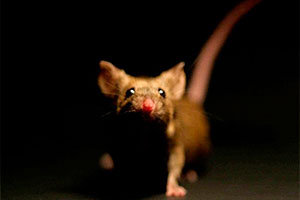
It is also when most people are finished eating supper and they tend to leave food scraps or unwashed dishes lying around. Mice use this as a perfect opportunity to feed and to go back into hiding before daylight.

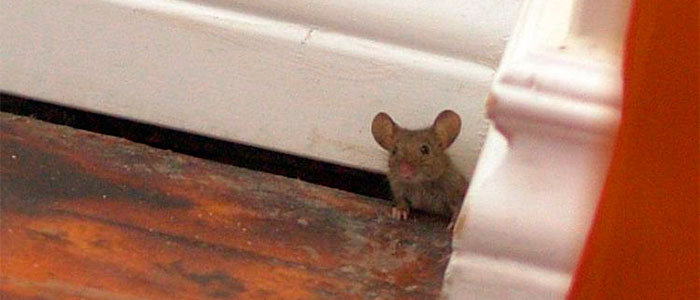
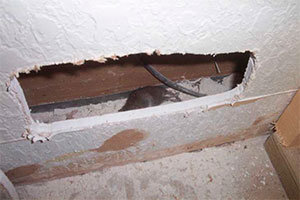 Walls are a common area for mice to hide. If you have any cracks in the drywalls, they can fit inside holes as small as the size of a dime. Mice easily form nests inside the drywall because it is difficult to detect them in such areas. Over time, the mice will breed and give birth to offspring within the nest. Are you looking to find ways of How to get rid of mice in walls?
Walls are a common area for mice to hide. If you have any cracks in the drywalls, they can fit inside holes as small as the size of a dime. Mice easily form nests inside the drywall because it is difficult to detect them in such areas. Over time, the mice will breed and give birth to offspring within the nest. Are you looking to find ways of How to get rid of mice in walls? 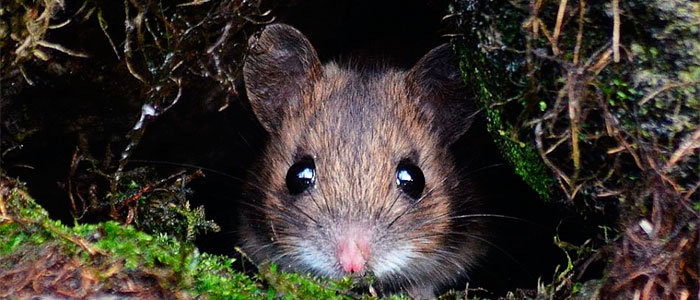
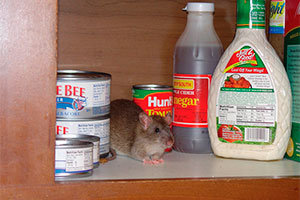 Kitchen cabinets are a classic example of where mice can hide but will typically not establish a nest. They can use small openings in your cabinets to access stored food or consume items that they got from other areas of the kitchen. When they detect someone approaching, they will hide deep within the cabinet to avoid being seen.
Kitchen cabinets are a classic example of where mice can hide but will typically not establish a nest. They can use small openings in your cabinets to access stored food or consume items that they got from other areas of the kitchen. When they detect someone approaching, they will hide deep within the cabinet to avoid being seen.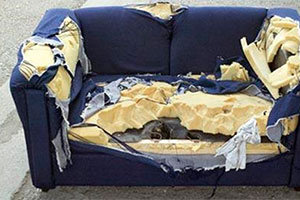 Upholstered furniture also serves as a convenient hiding place for mice in the home. They can easily tear holes and enter the furniture to hide whenever necessary. If you notice that your furniture has been chewed up and ripped open, this could be a sign of an infestation by mice.
Upholstered furniture also serves as a convenient hiding place for mice in the home. They can easily tear holes and enter the furniture to hide whenever necessary. If you notice that your furniture has been chewed up and ripped open, this could be a sign of an infestation by mice.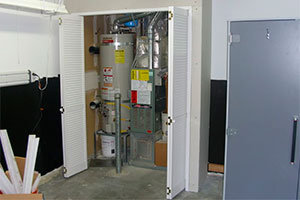 These serve as a warm and comfortable hiding place for mice where they can also set up nests over time. If your water heater is near a food source, mice can use it as a base where they scamper to safety when someone approaches. Larger water heater closets that have a lot of clutter will also eventually turn into the perfect mouse breeding ground.
These serve as a warm and comfortable hiding place for mice where they can also set up nests over time. If your water heater is near a food source, mice can use it as a base where they scamper to safety when someone approaches. Larger water heater closets that have a lot of clutter will also eventually turn into the perfect mouse breeding ground.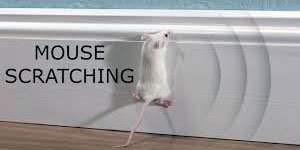 In order to lure a mouse from its nest, you must first know where it’s hiding. Watch out for signs such as mouse droppings (small black drops), scratching and tapping behind walls, or signs where the mouse has chewed through furniture, cardboard boxes, and walls.Once you have a good idea where the mice are, you can begin to lure them out of their hiding spots.
In order to lure a mouse from its nest, you must first know where it’s hiding. Watch out for signs such as mouse droppings (small black drops), scratching and tapping behind walls, or signs where the mouse has chewed through furniture, cardboard boxes, and walls.Once you have a good idea where the mice are, you can begin to lure them out of their hiding spots.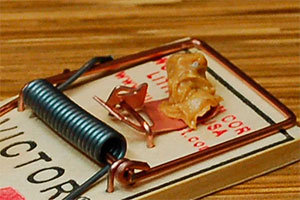 It is important to use the right type of bait that will lure mice from where they’re hiding. Foods such as
It is important to use the right type of bait that will lure mice from where they’re hiding. Foods such as 